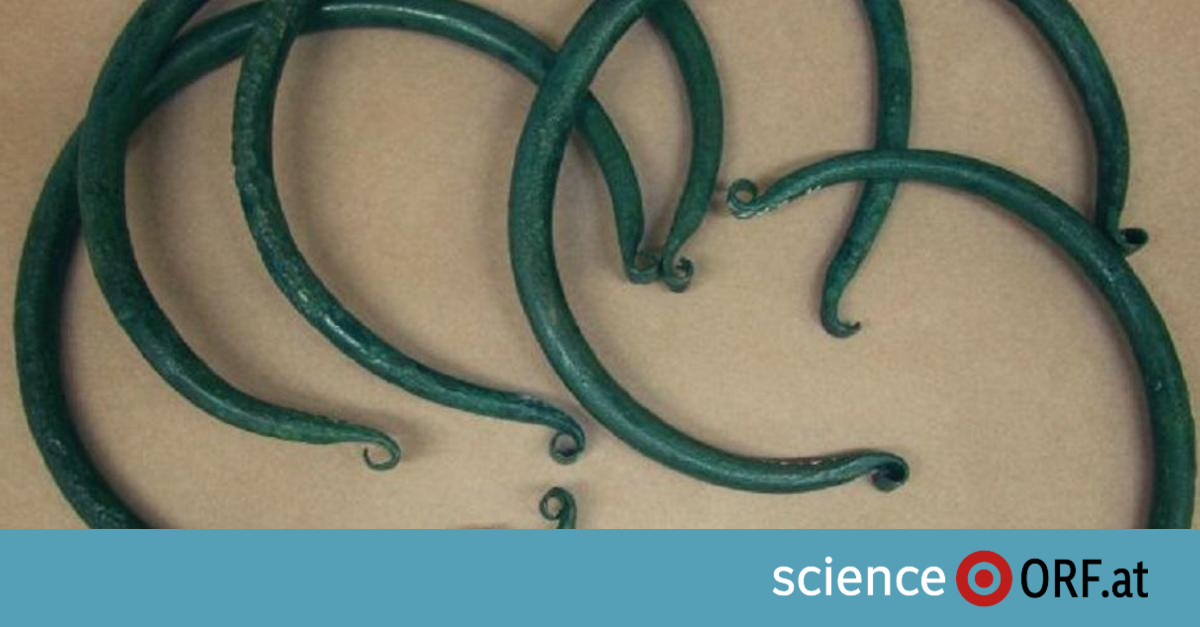According to Dutch archaeologists, the weight of most of the rings examined was so similar that it could not be differentiated by hand in the specialist journal “Plos One”.
Means of payment in front of the coins
The development of money and coherent systems of weight and measurement are among the most important prehistoric developments of the human intellect, write Maikel Kuijpers and Catalin Popa of the Faculty of Archeology, Leiden University in their work. Before coins were minted or banknotes printed, various pre-coinage means of payment were used, the spectrum of which ranged from mussels and salt bars to bronze objects. A key feature here is standardization. In terms of weight systems, however, Egypt, Mesopotamia and the Aegean Sea were clearly ahead of Central Europe.
In their study, the scientists examined more than 5,000 eyelets, buckle bars and ax blades made of copper and bronze from the early Bronze Age (around 2150 to 1700 BC). Rings and clasps were found mainly in the Danube region in Lower Austria, southern Germany and parts of the Czech Republic, ax blades typically found in central and north-eastern Germany, according to the work. In between there is an area where rings, clasps and axes were regularly found together, especially in Moravia and Bohemia. These objects are also found in smaller numbers in southern Scandinavia.
Many of these objects were found in large numbers, sometimes in hoards with several hundred pieces. For example, in 2014 in Oberding in Bavaria a depot with 796 copper bars from the early Bronze Age was discovered. “For our investigation, we specifically selected aftercare centers that contained at least five rings, clasps and / or axes,” Kuijpers told the APA.
70 percent of the rings “equally heavy”
Kuijpers and Popa compared the weights of these objects statistically, including the so-called Weber-Fechner Lawthat comes from perceptual psychology. Accordingly, objects in the hand must have a weight difference of around two percent in order to be perceptible. So in order to perceive the increase in weight of an object with 50 grams, its weight must increase to 51 grams. If the object weighs half a kilo, it has to add ten grams to look heavier. This principle is crucial in a time and region when there were no scales and people compared weights by hand.
According to the study, around 70 percent of the rings examined – they had an average weight of around 195 grams – were similar enough not to be perceived as having different weights in the hand. The researchers divided the bars into a heavier and a lighter group. With the latter, 38 percent of the clasps weighed around 81 grams, with the former 71 percent weighed around 186 grams. There was less agreement with the ax blades, where around a third of the objects examined had a weight of around 285 grams.
Standardized currency
In any case, the authors suspect that this similarity in shape and weight, together with the fact that these objects were often discovered in hoards, point to their use as an early form of standardized currency. There is also evidence that they were exchanged over longer distances: “We see rings that were found in Denmark or France, although not as many as in the main region,” says Kuijpers.
At the end of the Early Bronze Age, eyelets and clasp bars disappeared and a trade in scrap metal and cast cakes began. The researchers emphasize that two developments were required for this: that of scales and the cognitive development of a weighing system. The earliest evidence of this in Central and Western Europe would come from the Middle Bronze Age.
–


